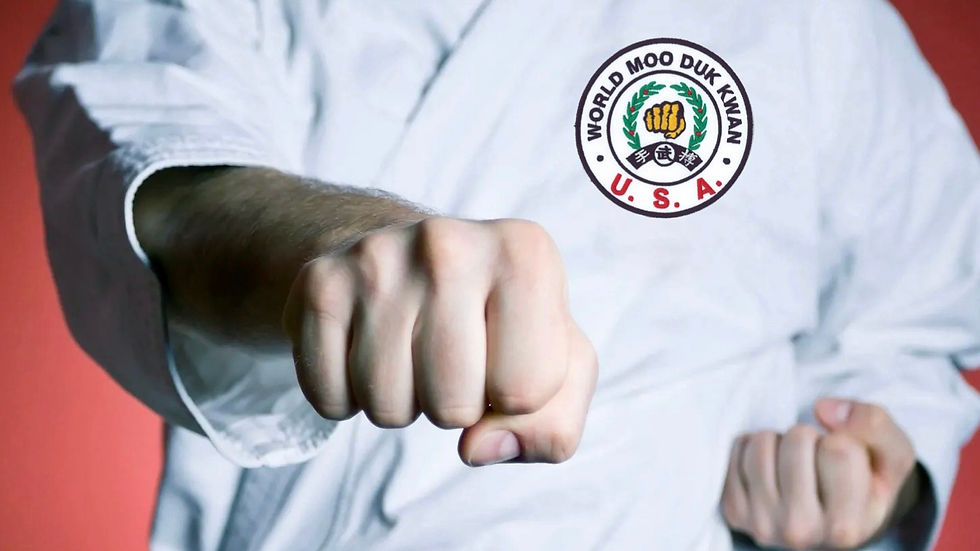The Pulling hand of power
- Steven Lemner
- May 8
- 3 min read
Son-eul Dang-gida: The Subtle Power of “Pulling Hand” in Martial Arts by Steven Lemner

In the intricate world of martial arts, where power, timing, and technique intersect, some of the most vital principles are often the least understood by beginners. One such concept is Son-eul dang-gida (손을 당기다), a Korean phrase that literally translates to “pulling hand.” Despite its simplicity in name, this principle plays a crucial role in the execution and effectiveness of many martial arts techniques, particularly in styles such as Soo Bahk Do, Hapkido, and Tang Soo Do (where it has a parallel concept known as hikite in Japanese).
What is Son-eul Dang-gida?
Son-eul dang-gida refers to the act of forcefully pulling one hand backward to the body—usually to the hip or side—while the other hand delivers a strike, block, or grab. This pulling motion is not merely a stylistic flourish; it serves several key biomechanical and tactical purposes that can drastically enhance a martial artist’s performance.
The Mechanical Advantage
From a biomechanical standpoint, Son-eul dang-gida facilitates rotation of the torso and shoulders, generating additional power in the opposite striking limb. This action activates the core muscles and links the kinetic chain from the legs through the hips and into the arms, resulting in a more explosive and efficient technique.
For example, in a standard Soo Bahk Do punch, the act of pulling the non-striking hand back toward the waist creates a torque through the torso that amplifies the speed and impact of the punching hand. It’s a classic example of how generating force involves the entire body, not just the striking limb.
Control and Setup
Beyond power generation, Son-eul dang-gida serves a practical grappling and control function. In self-defense or close-quarters combat scenarios, the pulling hand is often gripping or trapping an opponent’s limb or clothing. Drawing the opponent’s arm or body toward oneself destabilizes their balance, exposes vital targets, and neutralizes threats.
In this way, the pulling hand becomes a key player in controlling the engagement—setting up locks, takedowns, or follow-up strikes. The principle mirrors the push-pull dynamics seen in judo, jiu-jitsu, and other grappling arts, reinforcing the idea that martial arts are as much about manipulation and leverage as they are about direct offense.
Philosophical Balance
On a deeper level, Son-eul dang-gida embodies the principle of Umyong and the balance—between offense and defense, between giving and taking. The martial artist does not merely punch with one hand but harmonizes two opposing forces to maximize effectiveness. This idea reflects broader martial arts philosophies that emphasize harmony, flow, and equilibrium. It action is the key stone to the Umyong concept in actions.
Common Misunderstandings
Beginners often overlook the pulling hand, focusing all attention on the attacking limb. This neglect not only reduces power but also weakens the martial artist’s structure and leaves them vulnerable. Proper training emphasizes the coordinated movement of both hands, cultivating awareness and precision in every action.
Training the Pulling Hand
To develop proficiency in Son-eul dang-gida, martial artists can practice:
• Basic line drills: Focusing on exaggerated pulling motion during strikes to build muscle memory.
• Mirror work: Watching the timing and alignment of both hands in real-time.
• Pad or partner drills: Incorporating grabs, pulls, and strikes in fluid combinations.
• Forms (Hyung): Executing traditional patterns with conscious attention to the pulling hand’s role.
Conclusion
Son-eul dang-gida is a powerful reminder that in martial arts, success lies in the details. The pulling hand, though often overshadowed by its striking counterpart, is a source of power, control, and balance. Understanding and applying this principle can elevate a martial artist’s technique from mechanical to masterful—turning every movement into a symphony of intention and efficiency.
Whether you’re a novice just beginning your journey or a seasoned practitioner seeking refinement, paying attention to the “pulling hand” may be the key to unlocking your full potential.




























Comments